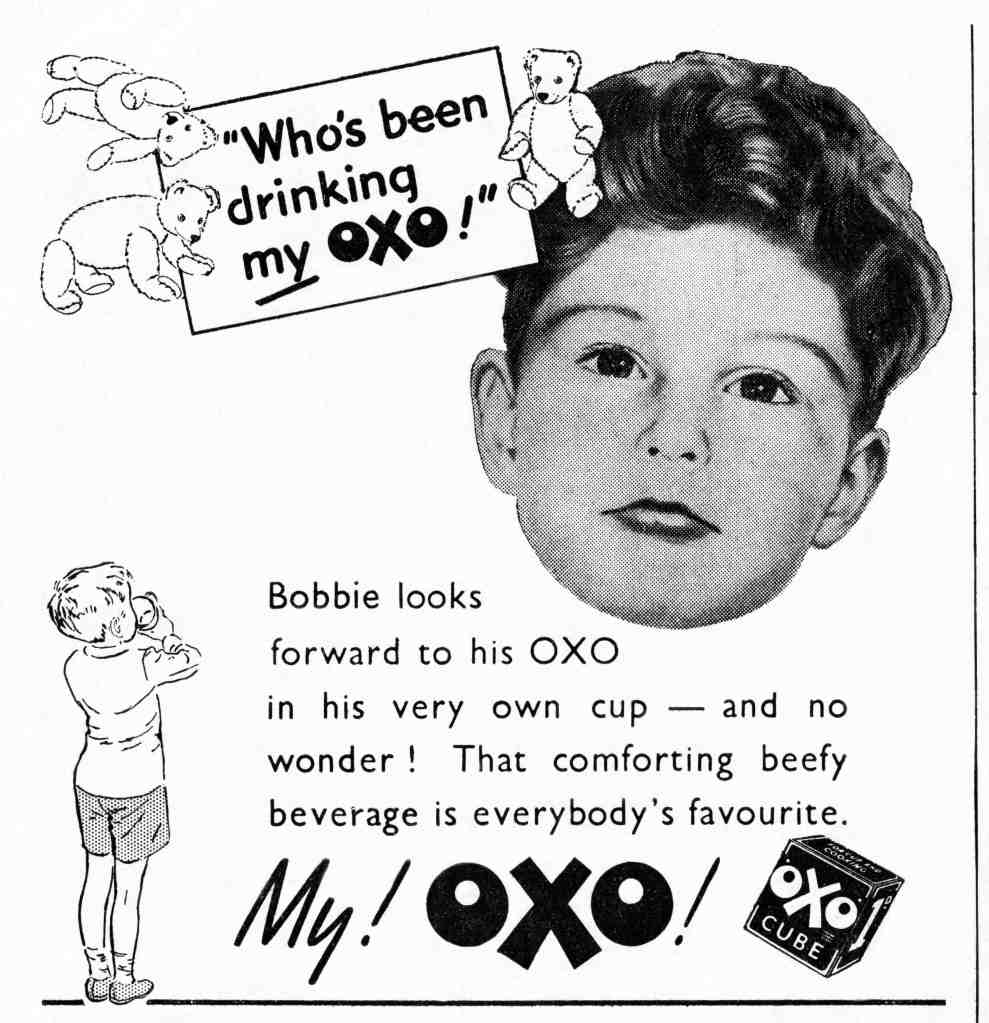It is now not unusual to find ‘bone broth’ in the refrigerated sections of supermarkets or delis, on sale for more than £7. Who can afford this stuff? If you have the time to make your own stock then all credit to you. But if not, the concentrated stock in little cubes or tubs is perfectly acceptable. Knorr and fancy upstarts such as Kallo pose as the superior products. But Oxo has stood the test of time. In a flooded stock market, their cubes remain my choice.
Beef is the classic (the name ‘Oxo’ is thought to come from the word ‘ox’). Retailers seem to have taken the lamb version off the shelves, though the brand says they’re working on getting it back. The company has moved with the times, a few years ago launching the first vegan cube. It won’t be my go-to – I use the chicken version most often – but if it means a less dry nut roast at the Christmas table I won’t object.
Above all I drink it unadulterated as a hot and reviving drink, as one would Bovril. If it was good enough to accompany Stanley on his quest to find Dr Livingstone, it’s good enough for me
Oxo have now expanded into jelly-like ‘stock pots’ to keep up with the competition. Flavours range from ‘garden vegetables’ (as opposed to those from your living room, presumably) to ‘aromatic Asian’. The pots are an unnecessary innovation in my book, though not entirely a break from the past as the company’s original product was in fact a viscous liquid. German chemist Justus von Liebig worked with George Giebert, an engineer based in the Uruguayan town of Fray Bentos (of corned beef and pie fame), to create ‘Liebig’s Extract of Meat’. Trademarked under a new name, Oxo, in 1899 (to ward off anti-German sentiment) and now under the helm of Charles Gunther, the cubes only arrived in 1910-11 – the result of a research project to create a more affordable version of the product. During the first world war, soldiers were given the cubes in their ration kits, with more than 100 million consumed.
The brand has been owned by the great and good – Vestey Group, Unilever, Campbell Soup Company, and now Premier Foods. The cubes continue to be produced in Worksop in Nottinghamshire. From the beginning, Oxo has marketed itself assiduously, from mail-in offers to outdoor advertising (see the Oxo Tower) to sponsorship, notably of the 1910 Olympics (what with Indian Foot Powder as a fellow sponsor, the marathon runners were rather spoilt).
The much-loved ‘Oxo family’ television adverts ran from 1958 (‘Oxo gives a meal man appeal’) to 1999, reaching their peak viewing figures in the 1980s with actress Lynda Bellingham. Recently the brand announced it is returning to screens with a TV marketing campaign majoring on ‘the importance of bringing the family together over mealtimes’. Good. Refreshing.
Oxo’s uses extend far beyond stock. Bashed up in a pestle and mortar with olive oil, garlic and any other herbs or flavourings it makes a fantastic rub for meat. Blanching your veggies in some Oxo stock and then dressing with a little butter will enliven something boring. Baby gem lettuces braised in the oven in stock ‘a la Nigella’ are a great side. A modest amount mixed in with the cream when making a potato dauphinoise is good. But above all I drink it unadulterated as a hot and reviving drink, as one would Bovril. If it was good enough for Florence Nightingale and the 2nd Duke of Wellington, and to accompany Stanley on his quest to find Dr Livingstone, it’s good enough for me. A Thermos full of it (with some peas and sweetcorn thrown in if you like) is all you need for a long hike. Consommé d’Oxo.

Speaking of hikes, the cubes’ compactness is an asset. A pack of them will take up less space in your hiking bag than a mini tin of spaghetti hoops – and will last you rather longer. They are among my most essential of camping provisions.
Sadly, since 2009 they have not been cubic. Instead they’ve become X-shaped, with grooves carved into the sides to make them easier to crumble, prompting Norman Tebbit to ask ‘Is nothing sacred?’. Antony Worrall Thompson was also cross: ‘What are people, wimps or what? It’s quite easy to crumble a cube.’ (There is also a nifty hack for crushing them to powder in the packet, before neatly pouring out.) With all the changes in the world, Chef Antony went on, this was one we could do without: ‘It is a real insecurity. Stick with what you know.’
The good news is that the cubes still look like cubes in their packaging – the foil doesn’t hug the notches – so I continue to find them very agreeable to play around with; rolling like dice, or flicking them high into the air so they somersault around, light glinting off their shiny casing. It’s the little things in life.







Comments